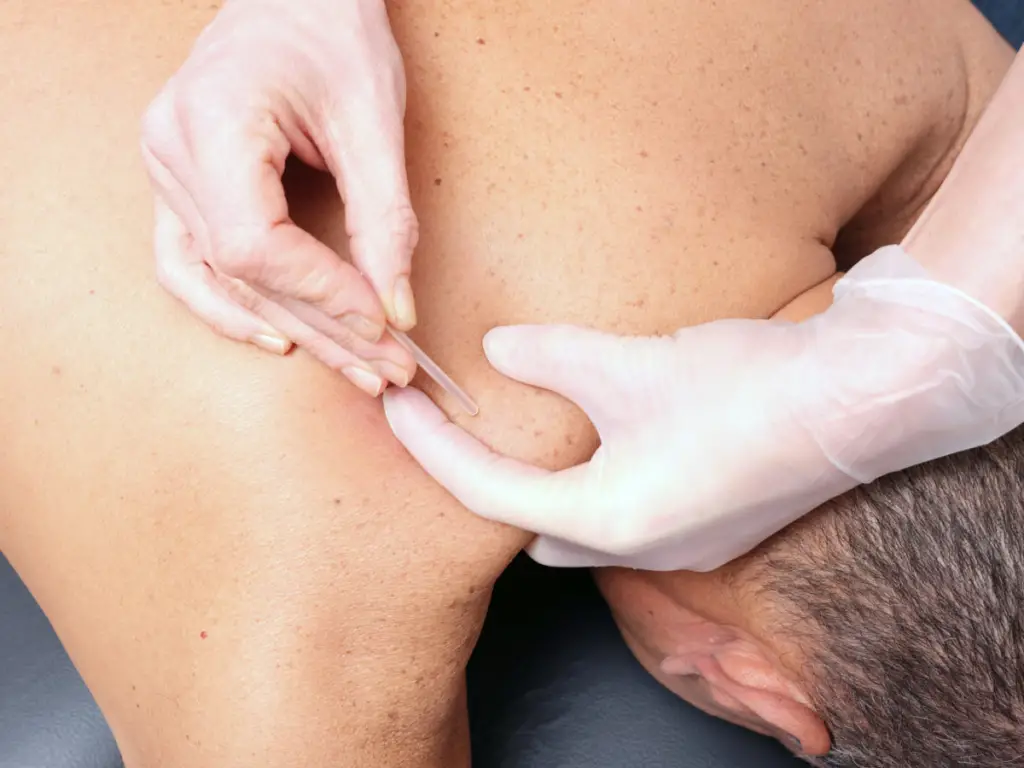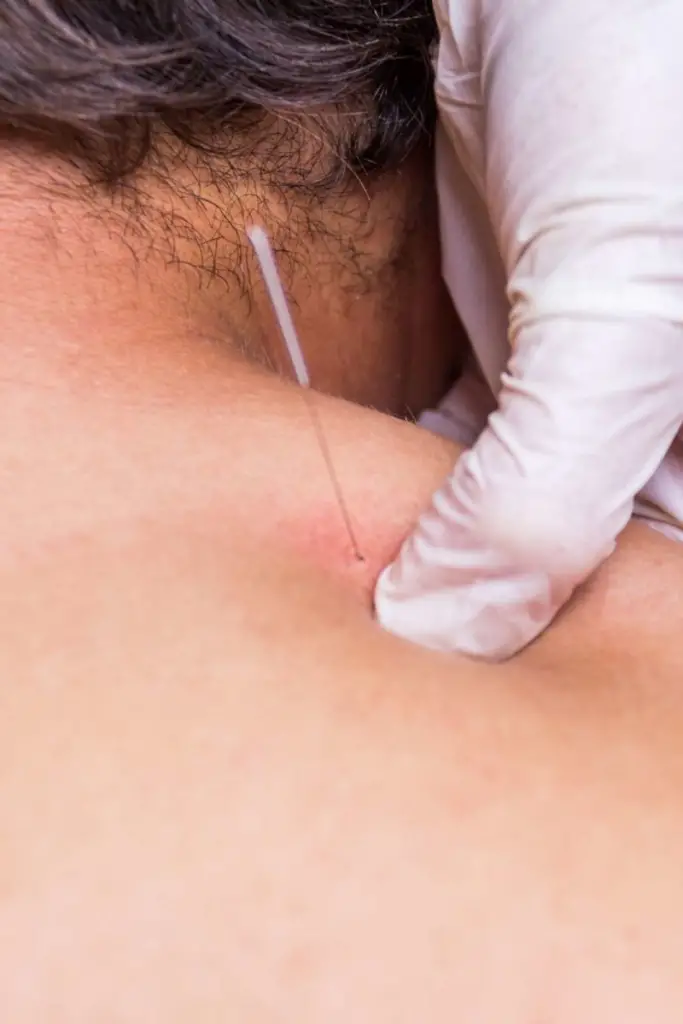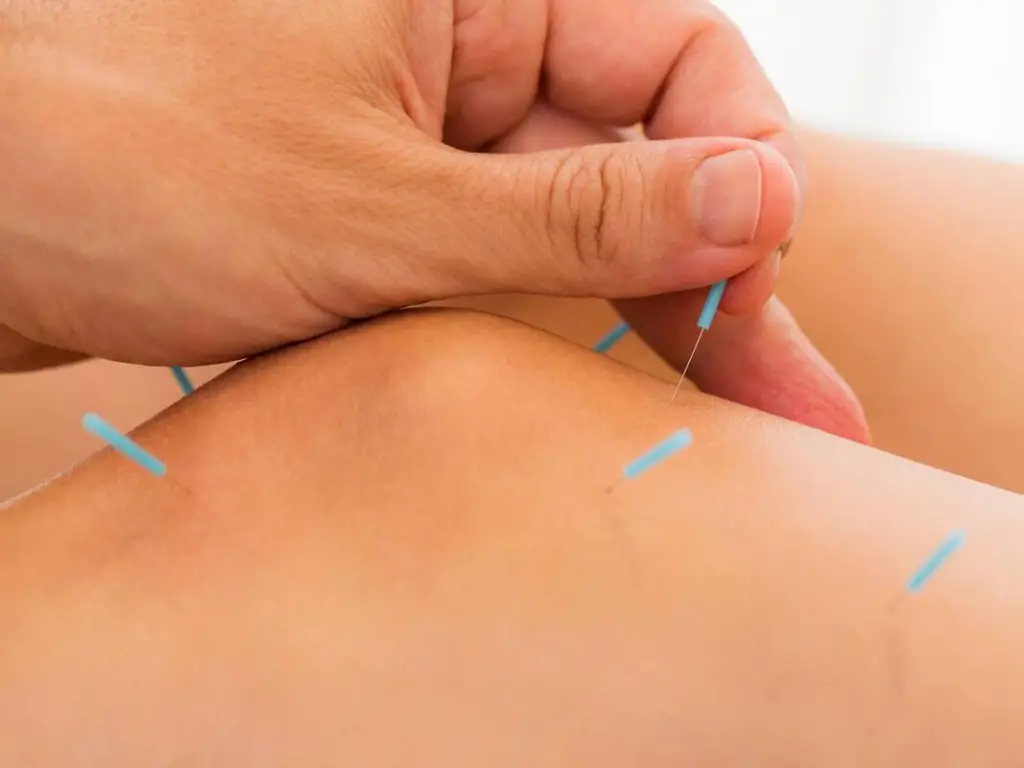Dry needling is a relatively new type of therapy used by physical therapists and other healthcare professionals. Unlike traditional acupuncture, dry needling does not involve needles to stimulate specific points on the body.
Instead, it involves using a thin needle that is inserted into areas of muscle tension or pain. While the effectiveness of this treatment modality is still being studied, some preliminary research suggests that dry needling may be an effective way to treat chronic pain conditions.
However, there is always a risk of injury when using needles, especially if they hit a nerve. In this blog post, we will discuss what happens when dry needling hits a nerve and how to avoid injuring yourself.
What is dry needling?

Dry needling is a treatment technique that involves the insertion of thin needles into the skin and muscles. The needles are then stimulated by electrical impulses to relieve pain. Dry needling works by targeting the myofascial trigger points, or knots, that can form in your muscles.
These knots can cause pain and muscle tension. The needles used in dry needling are much thinner than traditional acupuncture. They are also not inserted as deeply into the skin.
What is dry needling good for?
Dry needling can be used to treat a variety of muscle pain and dysfunction, including:
- Trigger points
- Muscle tension
- Muscle spasms
- Muscular imbalances
- Myofascial pain syndrome
- Tendonitis
- Arthritis
Dry needling is also effective in treating headaches, neck pain, and back pain. The technique can release knots in muscles (trigger points) that cause pain in other areas of the body (referred pain). It is also effective in treating muscle spasms, tension headaches, and TMJ disorders.
How does dry needling work with chronic muscle tightness?

Dry needling is a treatment that involves inserting thin needles into the skin and muscle to relieve pain. It is often used to treat chronic muscle tightness and other conditions such as headaches, myofascial pain, and tennis elbow.
There are several theories on how dry needling works, but it is thought that the needles stimulate the nervous system and release chemicals that help to reduce pain. Additionally, dry needling may help break up trigger points or knots of muscle that can cause pain.
Where do trigger points often occur?
Trigger points are often found in the neck, shoulders, and back muscles. They can also occur in other body areas, such as the hips, legs, and feet.
What are the risks of dry needling?
Some potential risks are associated with dry needling, although they are generally rare and mild. These risks include:
- local bruising or bleeding
- soreness at the needle site
- feeling dizzy or lightheaded
- fainting
- temporary increase in pain
More serious complications are infrequent, but could include:
- puncturing of the lung
- infection
- nerve damage
As with any treatment, be sure to talk to your practitioner about any concerns you may have.
Is dry needling better than a massage?
There is no clear consensus on whether dry needling or massage is better for treating muscle pain. Some studies have found dry needling to be more effective, while others have found massage to be more effective.
It may depend on the individual’s situation and what works better for them. Ultimately, both dry needling and massage can be effective treatments for muscle pain.
What is the difference between acupuncture and dry needling?

Acupuncture is an ancient Chinese healing art that has been used for centuries to treat a variety of health conditions. In recent years, acupuncture has become increasingly popular in the United States to treat pain and other health problems.
Dry needling is a form of acupuncture that uses thin needles to penetrate the skin and stimulate underlying muscles, nerves, and connective tissues. Proponents of dry needling say that this treatment can help relieve pain, improve range of motion, and reduce muscle tension.
Dry needling is based on the same principles as acupuncture. Both therapies involve inserting needles into the skin to stimulate underlying tissues. However, there are some essential differences between these two therapies.
Acupuncture is a traditional Chinese medicine (TCM) therapy that has been used for centuries to treat various health conditions. In contrast, dry needling is a relatively new therapy based on the principles of acupuncture but is not part of TCM.
While dry needling is a relatively new therapy, it is an effective treatment for various conditions.
Benefits of dry needling
One of the most significant benefits of dry needling is that it can help to release muscle knots or trigger points. When these knots are released, it can help to improve the range of motion and reduce pain.
Dry needling can also help to improve blood flow and circulation in the treated area. This can speed up the healing process and help to reduce inflammation.
Another benefit of dry needling is that it can help break the cycle of muscle spasms and pain. By releasing muscle knots, dry needling can help to prevent future episodes of pain and spasm.
Dry needling is a relatively new treatment option, but it is safe and effective for many people. There are few side effects associated with dry needling, and most people tolerate the treatment well.
Dry needling may be an effective treatment option for you if you are dealing with muscle pain, trigger points, or other chronic pain conditions. Talk to your doctor or a physical therapist to see if dry needling is right for you.
What happens when dry needling hits a nerve?
Dry needling is a form of therapy that involves inserting thin needles into the skin at specific points to relieve pain or muscle tension. Although dry needling is similar to acupuncture, the two therapies are not the same. Dry needling is based on Western medicine principles, while acupuncture is based on Traditional Chinese Medicine (TCM) principles.
Dry needling can effectively treat various conditions, such as headaches, migraines, TMJ disorders, and tension headaches.
It is also sometimes used to treat myofascial pain syndrome (a condition that causes muscle pain and tenderness).
One of the potential side effects of dry needling is hitting a nerve. This can cause a sharp, shooting pain that can radiate down the arm or leg. It is important to note that this is a rare side effect and typically only happens if the needle is inserted too deeply.
Dry needling is generally a safe form of therapy, but as with any treatment, there are potential risks and side effects that should be considered before undergoing treatment.
Is dry needling painful?
No, dry needling is not painful. In fact, most people report feeling little to no pain at all during the procedure. There may be a slight discomfort associated with the needle insertion, but this quickly fades as the needle is inserted into the muscle. The majority of people report feeling a sense of relief after the procedure is completed.
Can dry needling make things worse?
Dry needling is a very effective treatment for many conditions, but the procedure has potential risks. There is always a risk of bleeding or bruising at the needle insertion site. In some cases, dry needling can make existing symptoms worse. Before undergoing dry needling, it is important to discuss all potential risks and benefits with your healthcare provider.
How long is a dry needling session?
A dry needling session typically lasts between 30 and 60 minutes. However, the length of the session may vary depending on the number of trigger points that need to be treated.
How long after dry needling Will I feel better?
This is difficult to answer because it depends on the individual and the condition being treated. Some people feel immediate relief after dry needling, while others may not notice any difference for several days. However, most people report significant improvements within a few days to a week after treatment.
Conclusion
Ouch! That had to hurt. You jabbed the needle into your thigh muscle and suddenly felt a sharp, burning sensation shoot down your leg. What happened? You just hit a nerve! But what do you do now? There’s a lot of debate over the effectiveness of dry needling, but one thing is for sure: when it hits a nerve, it can hurt. If you’ve never experienced dry needling before, be prepared for an intense sensation that radiates down your arm or leg. While the pain can be unpleasant, it’s also a sign that the needle is hitting its target.
Additional Contents:


